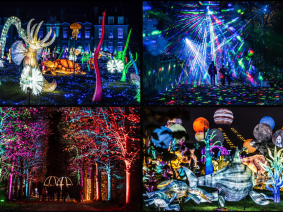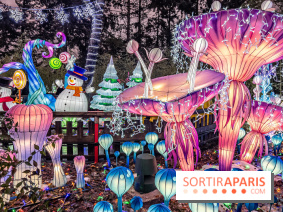Auvers-sur-Oise has long attracted artists of all kinds to its beautiful, tranquil surroundings. Among them Paul Cézanne, Camille Pissarro... and Vincent Van Gogh. This small town some 30 km from Paris is even the last place where the sunflower painter lived: he took his own life 130 years ago, on July 29, 1890. In 2020, the town attracts many art lovers, who come to admire the places painted by Van Gogh. Now, a new pilgrimage site is open to them... and with it a surprise.
Walking through Auvers-sur-Oise is like walking through the Dutch painter's paintings. Signs along the way allow us to compare the work with reality. We linger in front of the town'schurch, imagine the ears of wheat gently growing in the fields, pay a visit to the former home of Docteur Gachet or meditate for a moment at the grave of Vincent Van Gogh, buried alongside his brother Theo.
The town also boasts a beautiful château and a museum, the Musée Daubigny. And of course, the must-seeAuberge Ravoux, where Van Gogh and many of his fellow artists stayed. The inn is closed for renovation until March 2021. While we'll have to wait a little longer to (re)see Vincent Van Gogh's famous room, we can console ourselves by admiring the building's exterior and imagining all the stories that took place there.
130 years after the death of the Dutch painter, a new stage awaits visitors. Inaugurated on July 28, 2020, this discreet site is of the utmost importance for those wishing to retrace the path taken by Van Gogh during the last days of his life. Indeed, a few months ago, a researcher discovered the precise spot where the artist painted his last canvas, and therefore where he spent his last day.
Racine's secret
It's an unusual and moving story born during the confinement. Wouter Van der Veen is a university professor and researcher on the life and works of Vincent Van Gogh. He also runs theVan Gogh Institute in Auvers-sur-Oise. While preparing an exhibition on the town's history, his eyes fell on an old postcard. The researcher recognizes trees and rocks, a composition visible on the last painting by Vincent Van Gogh on the morning of his suicide, Racine.
Not wanting to get carried away and skew the analysis, Wouter Van der Veen forces himself to be cautious. Nevertheless, the more he dissects the postcard and the painting, the more his doubts disappear: he has just discovered where Vincent Van Gogh painted his last work. One eyewitness account states that the painter began his canvas in the morning, but the colors used on the painting indicate that he was still working on it in the late afternoon.
Van Gogh thus spent his last day on a small road leading to the fields, a hundred meters from the inn where he was staying, facing a thicket of trees, stones and grasses. The discovery is supported by Teio Meedendorp, researcher at the Van Gogh Museum in Amsterdam, where the original painting is on display.
A bittersweet farewell
For Wouter Van der Veen, this painting is a colorful farewell letter: " Everything in his painting speaks ofhumanity. The roots are the struggles of life, death and renewal ", explains the lecturer. He also supports the idea that the suicidal act that took the painter's life was not the result of a moment of madness. " Each of Van Gogh's paintings is extremely well thought-out. He painted all day, he was in full possession of his means, of his reason, to produce this work."
Van Gogh's suicide was not, therefore, the act of a man lost in his madness, overwhelmed by a sick and unreasoning mind. Vincent Van Gogh freely and consciously chose to end his life, no longer having the desire or strength to fight the difficulties and pain that had marked his life as a man.
For Vincent Van Gogh, the end of a life is not the end of everything. Today, we know he was right. Although we would have liked him to have lived longer, and to have painted more masterpieces, Van Gogh's career continues long after his death. His story lives on in the museums and associations that pay tribute to him. It lives on through his family, through the descendants of his brother. And it lives on through all the enthusiasts, all those who were touched by his art and who, in turn, come to walk the paths of Auvers-sur-Oise.
The Château d'Auvers-sur-Oise, the Impressionist treasure and its program
Discover the Château d'Auvers-sur-Oise and its sublime English gardens. Throughout the year, exhibitions and events focusing on Impressionism await you. [Read more]
Please note that it's been over 4 years since our last visit, so the place and experience may have changed.
Dates and Opening Time
Starts December 17, 2024
Location
Auvers sur Oise Castle
Château d'Auvers sur Oise
95430 Auvers sur Oise
Official website
www.ville-auverssuroise.fr















 The Château d'Auvers-sur-Oise, the Impressionist treasure and its program
The Château d'Auvers-sur-Oise, the Impressionist treasure and its program














